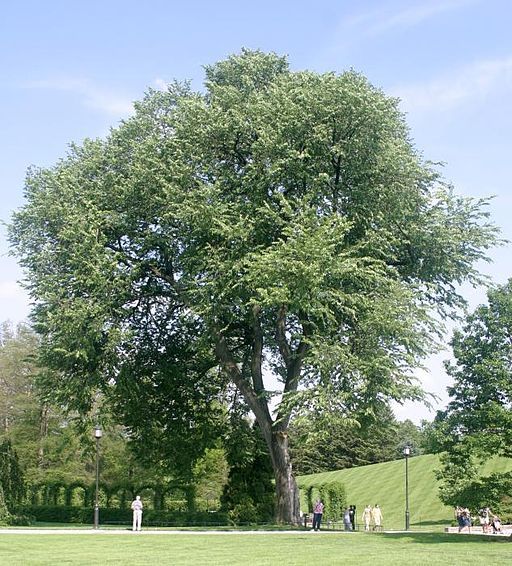American Elm : Overview

This tree was planted in the 1930s and is the last American elm in Longwood Gardens, Kennett Square, Pennsylvania to survive Dutch elm disease. (Henry Hartley, May 22, 2004)
American elms are the classic tree in the late 1800s and early 1900s that lined many American streets. This visual drew me into the American elm. One of my favorite places in the world, Shelburne Farms has trees that line many of its roads. Shelburne Farms was built in Shelburne, Vermont in the late 1890s. This place was the summer home of Dr. Seward Webb and Lila Vanderbilt Webb. The grandchildren of the Webbs restored the land and today Shelburne farms has around 1,400 acres of working farm, a sustainability school, a farm barn open to the public, public walking trails, an Inn, a restaurant, many buildings for special events (like weddings, parties, and conferences), and some private homes. Even though Shelburne Farms offers many different opportunities for the public to enjoy the land, there are still many back dirt roads that not many people know about. These are the special roads that are lined with trees. When I found out that American elms are the type of tree known to line streets, I thought that maybe this tree is the secret behind the beauty and majesty of Shelburne Farms. Unfortunately, recently when I went to Shelburne Farms, I found out that most of the trees that had lined these magnificent roads were American elms, but they had died during the spread of the Dutch elm disease in the mid-1900s. Most of these trees had been replaced with chestnut trees or another type of elm. Therefore, I would like to dedicate these following passages to all of the American elms that died on Shelburne Farms.
